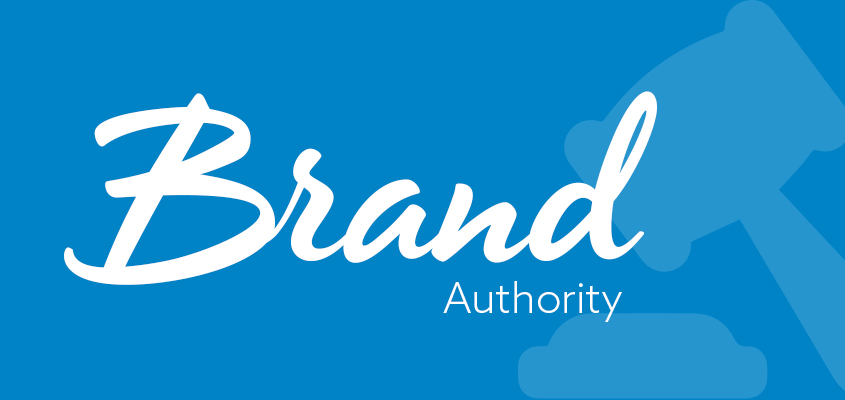The most difficult thing brands face online is managing their brands. This is due to the fact that in most cases, followers of the brand will tend to believe all the negative comments and attacks on the brand to ruin its reputation.
It is easy to get so wrapped up in what others are doing that you lose sight of what people are saying about you. Or more importantly, you forget about your own conversations and relationships that you have been working so hard to build.
In order to pull yourself together and withhold your brand’s reputation, you will need to employ prevention to avoid bad reputation. You have to be smart in detecting utterances that are trying to negatively attack your brand. You have to care how to respond both on appreciation and trolls.
For instance, you can practice the following.
Exist as a Brand
1. Know your vision: Let first things be first. In order to build and manage an online reputation, you should know what you want to achieve as a collective brand. At this point, you should have the essentials: A name, a logo, website, and hopefully, most importantly, a mission.
Decide what you want your brand image to really be. What do you want your audience members to feel when they see your name, logo, or anything that you publish?
I shared a thread on Twitter to help you pick the core values of a brand.
2. Design the logo and a template for it. How do you want your colours to look like? The logo design, size of the fonts, which fonts & visible is it?
— Janet Machuka (@janetmachuka_) May 14, 2019
2. Create stakeholder personas: Before you became a real brand, you probably (or at least should have) had a good idea of who your customers are. After all, most brands are built from a specific need you are looking forward to fill or problem to solve.
Identify your target audience, operate beyond your customers to include other stakeholders, such as potential brand partners, content partners, employees, members of the media, and the list goes on.
Know these stakeholders. What problems do they have? What are their interests, needs, and goals?
Start by creating stakeholder personas by defining what you need to know about your stakeholders; what are their demographic and their roles? What interests them? Where are they currently finding their news and information? What information is going to allow you to better communicate with them?
3. Inquire for feedback from your audience (engagement): Each time you offer content, ask questions. You can also include free gifts to customers upon answering some questions.
Additionally, make engagement the key principle to building your reputation and audience at the same time. Prove to them that you are not a robot. Personalize the responses.
Personalization in social media marketing: It is all about doing things to serve your customer first. You simply put yourself in your customer’s shoes once in a while to look at things in their perspective. This will immensely help you improve your marketing strategy.
— Janet Machuka (@janetmachuka_) October 25, 2019
By using a media monitoring tool, it will allow you to discover new conversations around your brand and related terms, as well as where these conversations take place. Listen in to learn more about your target audience.
4. Define your brand voice: After knowing your vision is and who your stakeholders are, define your brand voice.
Depending on what it is you offer, your overall tone may be obvious. For example, someone marketing a treatment for a chronic disease is going to speak in a much different tone than someone offering a social media management tool.
Talk to your audience in their voice. Listen in on the communities’ voice; what are they saying Monitor how your stakeholders are conversing between themselves and other brands, and then adapt a voice that aligns with their communication style.
First things first. Brand voice is just one part of a brand. It works in concert with your visual system,your digital presence,your social media connections,your product packaging,and your event and experience branding. And it’s driven by brand strategy and marketing fundamentals
— Barrack Onyango™ (@barryonyango) January 3, 2019
5. Set brand guidelines: In this category you need to apply everything we did in the earlier steps to create a cohesive document that will get anyone who represents your brand on the same page and singing the same tune.
You may have different versions of your guidelines document depending on their relationship with your audience.
Brands are made by humans, so why do we sometimes feel like the marketing messages being delivered are robotic? In order to avoid this,make sure you follow these guidelines;
— Barrack Onyango™ (@barryonyango) January 17, 2019
Brand guidelines create consistency in how your brand is perceived. They help one avoid any potential public relations disasters caused by a lack of information or communications.
6. Identify where you need to be: As mentioned in step two, listening via a media monitoring tool is an easy and effective way to learn where your audience is discovering and sharing information online. Any additional data can be found when creating your audience personas.
Make sure to make a list of all places you should have a brand presence on or actively contributing to, including social networks, forums, news sites, and blogs.
7. Build media relationships: An effective media monitoring tool will pick up any mention of your brand name across online news outlets, blogs, forums and social media.
By monitoring key terms related to your business, you can also identify and reach out to journalists who would be interested in your story, but have never heard of you.
8. Monitor what people are saying: Let’s not forget that the most important aspect of managing a brand reputation is to know what people are saying about you.
Monitoring what happens around your brand will help you know how your brand is being perceived. This can also help you know what corrective or proactive actions you need to take to align what’s being said with your target brand image.
This is where media monitoring tools come in handy. Be proactive in monitoring for brand mentions and responding with valuable information in a friendly, non-intrusive manner.
Management of Reputation
9. Avoid cyber bullying other brands: They say Karma will always come back for you! Avoid attacking and criticizing other brands negatively. Focus on your brand building and existence than hurling insults to others.
If it is a must you criticize a brand, use approachable words that will be taken in lightly. In most cases, corrections with reference to where the mistake was done will rank you highly in criticizing positively since you would helped the growth of that particular brand.
If it is overwhelming, find a way to manage the criticism. Don’t let it get into your nerves.
People want to be praised but not to be told the truth
The truth is, praisings only don't grow u
Criticism does
Correction does
Some of us think being told the truth is being demeaned. NO! Correction gives u a chance to reflect on yourself & choose to change for the better.
— Janet Machuka (@janetmachuka_) November 9, 2018
10. Regulate your privacy settings: Most social media platforms allow you to set your account according to your wants. For instance, Facebook has buttons one can set privacy in different ways; either to allow tagging or not, to allow a friend to post on your timeline or not, to allow your account to be visible to only you, friends or the public among others. These privacy settings prevent destructive messages about you or uninterested things from being posted on your wall.
11. Be human friendly, approachable: Be someone who can be approached. Sometimes your followers would like to ask you questions or have a conversation with you. Will you engage them? How about how you respond to them? Additionally, you can use a profile photo that is captivating and welcoming so as to be approachable.
Humanizing a brand
3. Share what happens behind the scenes through photos or videos showing your usual workflow or the steps behind creating a product.
4. Create a hashtag for your brand people can use to share what they love about your product or use it #AfricaTweetChat pic.twitter.com/rTS9gTYrn3
— ATC Digital Academy (@AfricaTweetChat) February 16, 2019
12. Give honest answers to your audience: If you are dealing with products and services, ensure that you give honest descriptions about them. Do not give false hopes that might backfire after the users purchase and use your products. Honesty will build trust and good relationship between you and you existing and new customers and clients.
Furthermore, focus on having a transparent bio attached to your profile. Are you what you say you are?
13. Create more high-quality content: Content is the most important. Be in control of what you share. Is it interesting? How are you editing your texts?
A good brand focuses on high quality pictures. Do not always talk about you in your content, talk about the people and how you and them as a collective can make something work.
AUTHENTICITY: Taking in what others have already put out and rephrasing it
Isn’t original, no one will link back or share posts that are played out, being authentic creates value, it gives your followers or audience a better perspective on a product service or idea. 1/.— Joe Human (@joe_human_) May 13, 2019
14. Implement integrated Search Engine Optimization to manage your reputation on search engine: As a brand, many people will search about you to check on your pictures, the news about you and your profile at large.
Are you visible on Google search engine for instance? How about the description you have given yourself? Edit yourself on the search engines and create a brand name in all the social media platforms you are in.
15. Personality consistency: Focus to be known by two or three things. Don’t be just everywhere. Know your niche. If you are known to be posting fashion and beauty content, focus on that.
Additionally, your behavior and character should not be dwindling from time to time. Make it consistent and admirable. Let people recognize your character from what you share on the digital platforms.
https://twitter.com/Onesmus_Musyoki/status/1168962209814392839
Wrapping it up
Building a brand community requires a lot of dedication for activities such as creating original content, responding to every message and comment, sharing stories, encouraging audience engagement, and partnering with fellow contributors.
— Janet Machuka (@janetmachuka_) January 2, 2020
Now that you know what you want people to be saying about you, how you want your brand to be presented and perceived, and whether or not your stakeholders’ perception aligns with your goals, you can get to work on an actionable brand strategy that will have you looking unique in the cluster and noise of the internet.









